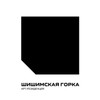Residence infrastructure. To each according to ability and need
“Shishim Hill” publishes a series of texts, which provides insight into various components of the processes around an art residence.

Infrastructure is perhaps the most important component of an art residence, at least that was the case in the pre-covid era. In fact, according to the concept adopted in the recent decades, art residences provide for an artist’s stay at their own or partner’s expense. At this point, residences resemble classic hotels. Usually, accommodation infrastructure is accompanied by working conditions (workshops), presentation possibilities (exhibition halls) and environment for communication (for example, shared kitchen). All this makes up the infrastructure that an art residence offers to artists. However, one more type of infrastructure may be singled out: the one, in which the residence immerses its artists. The first type relates to the conditions of residences, the second deals with the context of its existence.
These factors should be considered in balance and clearly realizing that an impeccable implementation of one of them does not let off working on the other type. What is also important that infrastructure should provide for any needs in an art residence. For example, if a residence requires producing a new project, its infrastructure should include a workshop and / or a resource of access to a third-party production site (budget, partnership agreement). If a residence involves a long stay, it should have conditions that differ from those sufficient for a week’s stay (for example, to live without washing clothes or cooking for 7 days is one thing, but for a month it is completely different).
It is through the infrastructure that the residence format opens up with its everyday facet. It is ridiculous to expect luxurious living conditions from residences, as a rule, everything is quite minimalistic. Everyday life should cover all the bases — so that it does not distract from other processes, does not demand a lot of time for its own maintenance. It’d be perfect if all the elements of this everyday life are standard and easily replaceable: thus, they are more useful. For example, a simple coffee pot will always outperform a complex coffee machine, which, anyway, few people will have time to learn how to use, almost everyone will be afraid to break, and later someone will definitely break it. Ideally, residences should not hold such objects, for the sake of which one would like to add a clause on property damage to the contract. Well, if there is such a clause, it is important to understand that unless there are papers documenting the “before” and “after” state of this valuable item, the clause is worthless.
The infrastructure of an art residence combines functional and practical elements, as well as the professional environment, connection or engagement with which a residence creates or which it provides to the artists. This connection or engagement is not idle and can affect a resident’s commitments or a long-term effect of their residency. For example, if a residence is a museum unit, then it may have an essential infrastructural bonus: access to archives and museum funds. Such a residence most likely has a permanent exhibition space and is interested in exhibition projects that can be set up both as an outcome of the residence, or after a while within a separate agreement. An exhibition at a museum is not only a great line in a CV, but also it is a chance that your project will be noticed by the public. After all, museums may have infrastructure for maintaining your exhibition (technical specialists, administrators), a resource for informing about it and a reputation among visitors.
However, it is also possible that a residence does not formally belong to a larger institution, but has strong professional ties that allow artists to view their stay initially in a long-term perspective. It doesn’t mean that along with an invitation, he or she receives a career plan drawn up especially for them. It is unlikely that any global promises are reasonable at this stage. Though, the introduction of an opportunity to choose new contacts is significant: according to need and to situation. The environment, in which the artist is placed, matters, an opportunity to become part of this environment during the residence is essential.
Internal and external aspects of infrastructure meet when it comes to deciding what will happen after a residence. For example, what happens to art pieces that were created in the residence. Can they be sent to the author (who will do it, funds) or should artists fit everything into their suitcases? If works remain in the residence, is there an opportunity to store them? And to exhibit? Will the artist and the residence stay in touch? What group do artists fall into? If the residence is permanent, it may present programs for a group of former residents. These can be collective exhibitions, publications, and exchange residences — any projects.
Nonetheless, sometimes a residence is just a residence. It has a clearly localized support infrastructure, has no ability and / or desire to make plans that go beyond its boundaries. Anyway, even a compact infrastructure needs a clear and transparent description. After all, the word infrastructure can include everything that is already waiting for artists when they arrive, everything that they can count on as a given. It is what will serve as the basis and springboard for effective work and what will provide for an unhindered entry into the artistic process.
Text: Zhenya Chaika, curator, Shishim Hill artists-in-residence
Translation: Anna Bubel Goldfarb
